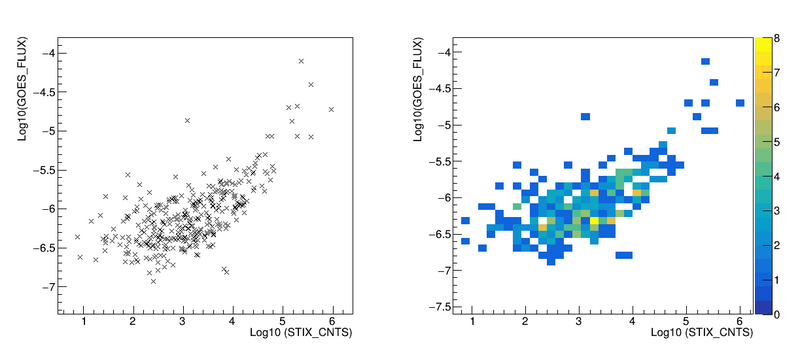Difference between revisions of "GOES Flux vs STIX counts"
| Line 11: | Line 11: | ||
with x=log10(stix_peak_counts)/r^2<br> | with x=log10(stix_peak_counts)/r^2<br> | ||
| − | where p0, p1, p2 are the parameters from the curve fit, peak_counts is the STIX QL LC peak counts and r is the distance between the Sun and solar orbiter in units of au. | + | where p0, p1, p2 are the parameters from the curve fit, peak_counts is the STIX QL LC peak |
| + | counts and r is the distance between the Sun and solar orbiter in units of au. | ||
| + | An | ||
Revision as of 08:47, 18 January 2022
File:Goes-stix-flux-fit.png
Fig. 2 A profile of the histogram shown in Fig. 1. A cubic function fitted to the profile is also shown.
The GOES flux of a flare is estimated using
flux=10^(p0+p1*x+p2**x^2+p3*x^3),
with x=log10(stix_peak_counts)/r^2
where p0, p1, p2 are the parameters from the curve fit, peak_counts is the STIX QL LC peak counts and r is the distance between the Sun and solar orbiter in units of au. An
